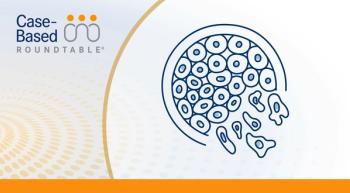
Importance of Molecular Characterization When Treating RRMM
Paul G. Richardson, MD:In the context of molecular characterization of relapse, I think this is an incredibly important area. We assess bone marrow aspiration and biopsy for cytogenetics, which should include FISH [fluorescence in situ hybridization], recognizing that the more sophisticated tools that we have are not necessarily available in community practice; but certainly, FISH is. Why that’s so important is because obviously if a patient has acquired a translocation of 11;14, that’s very helpful to us. It allows us to deploy a targeted therapyspecifically, venetoclax. We know that in combination with proteasome inhibitors for patients who are t(11;14)-positive, it confers remarkable clinical benefit. The important thing to note though is in those who are not t(11;14)-positive, this has to obviously be approached with much more caution. In those patients, as best as we can tell, the impact of the drug, unfortunately, is adverse. And so, those patients should obviously not be exposed to venetoclax at this point.
Also, from the molecular characterization of disease, we learn a lot more. For example, has the patient acquired a 17p deletion? I think as most of the audience appreciates, genetics in myeloma change over time. So what your genetic characterization of the patient was at diagnosis can be fundamentally different at relapse. And so, noticing if there’s acquired 17p becomes very important. Then we know we have a high-risk situation and can adapt accordingly.
In that same spirit, if there’s t(4;14), t(14;16), these are markers of poor risk. We’re now recognizing that 1q amplification is also associated with poor risk. Conversely, obviously standard risk is none of the above, and that obviously can be helpful as well in assessing the intensity of treatment that may be required. In terms of therapeutic options, as we think about 1q amplification or 17p deletion, integrating proteasome inhibition into the algorithm really does make sense. Integrating antibodies makes great sense. Optimizing the immunomodulatory-based platform also makes sense.
Transcript edited for clarity.







































